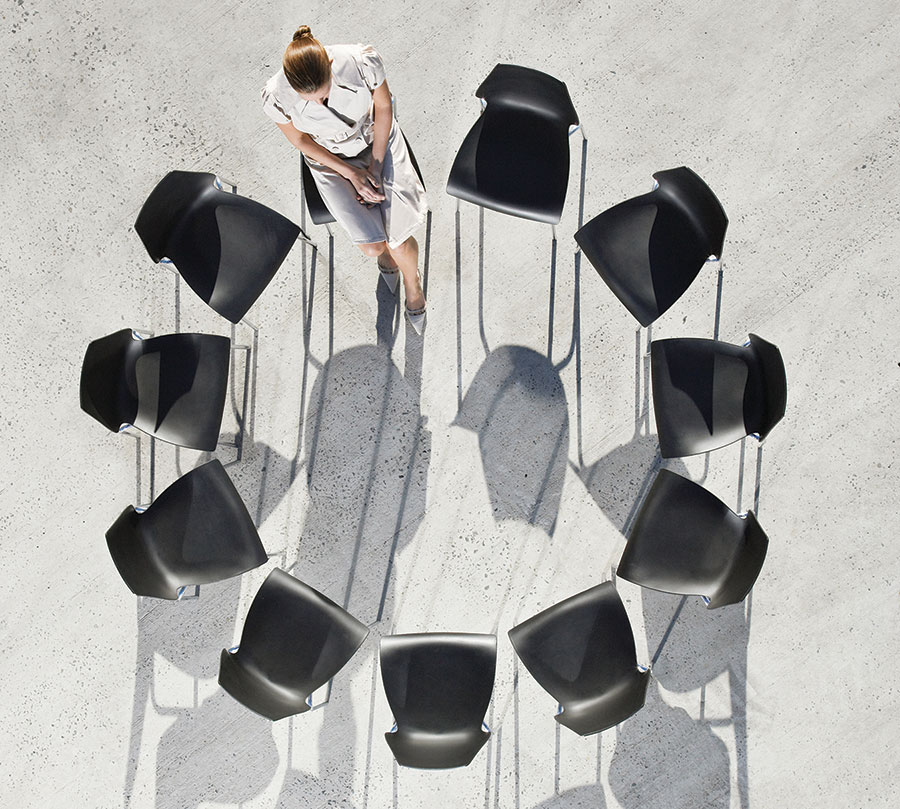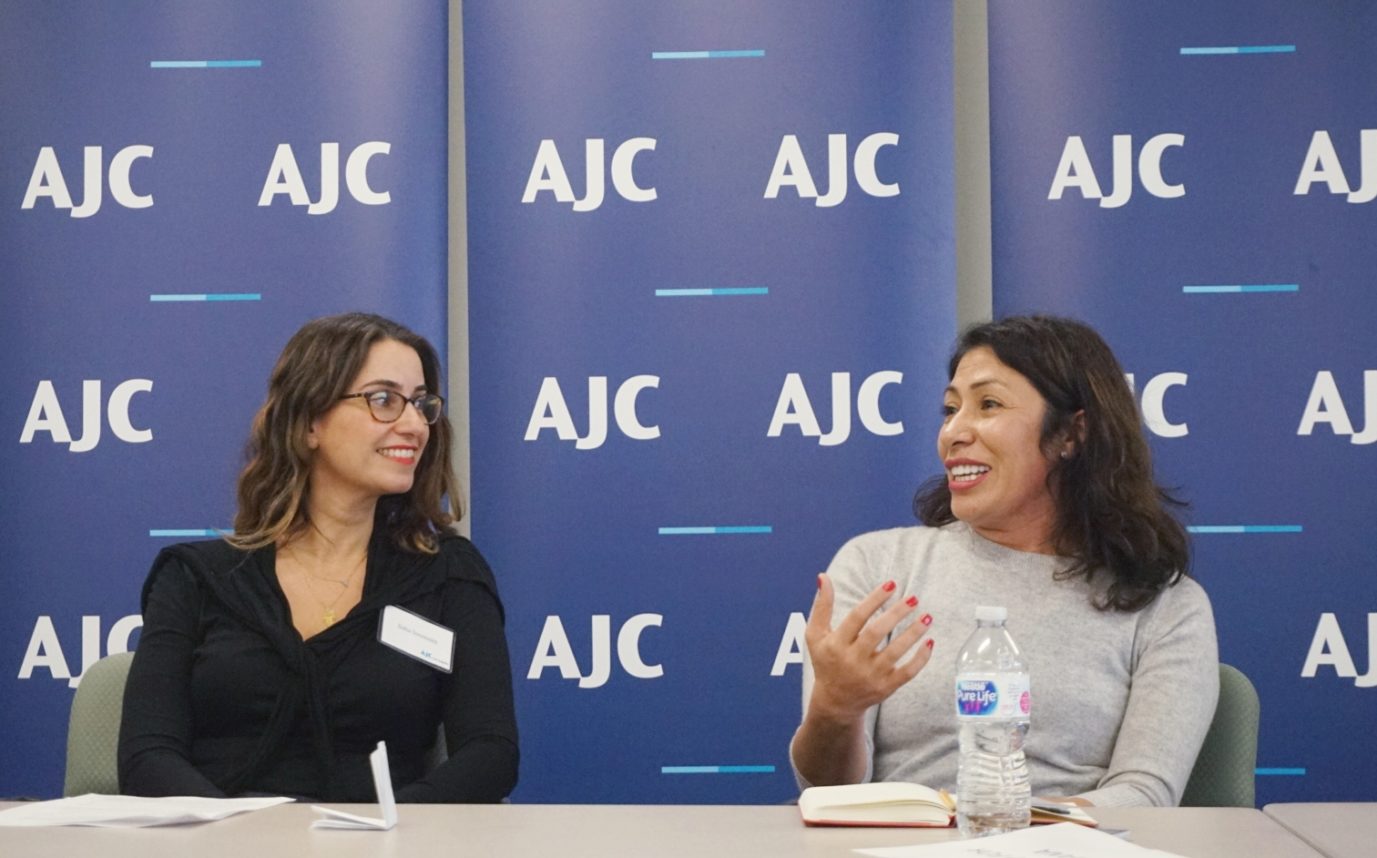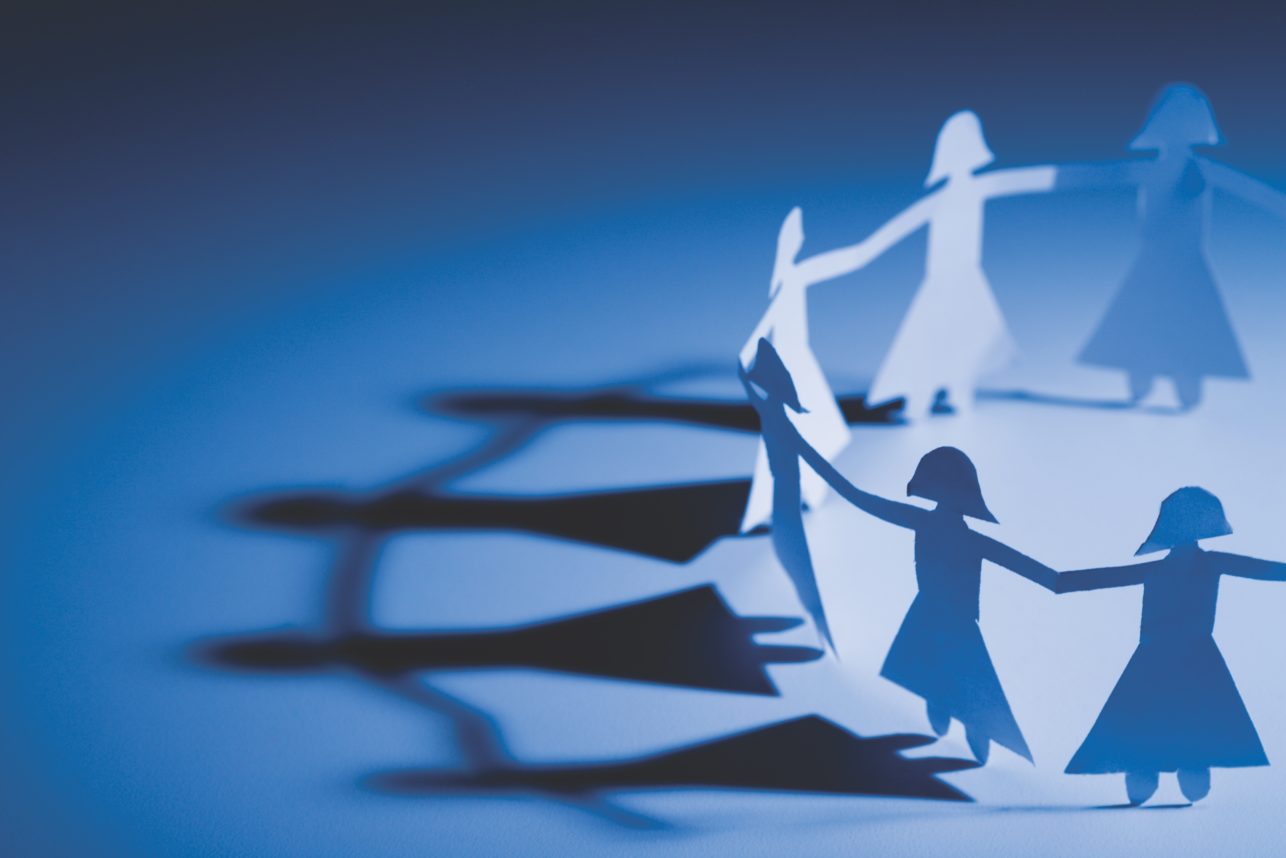 Photo by Martin Barraud/Getty Images
Photo by Martin Barraud/Getty Images Judaism teaches us that women are inherently spiritual and are often the center of the home. Each week on Friday, in households across the globe, families gather for Shabbat. A special tribute to women echoes across tables, the 22-verse poem found in proverbs: eshet chayil (a woman of valor). The “woman of valor” is praised for all that she does, whether seen or unseen.
Eshet chayil has a new meaning for me. Last year, I embarked on a journey to write a book about women in diplomacy (“A Seat at the Table: Women, Diplomacy, and Lessons for the World,” New Degree Press). I asked myself, “Who is a modern-day woman of valor?” I want to learn from her.
Over eight months — whether over the phone sitting in my kitchen, or face-to-face in elegant Washington, D.C. embassies and offices — I asked the same questions of more than 30 women leaders. In these private conversations, most replied, “No one has ever asked me that.”
Women diplomats, dignitaries and officials revealed intimate details of their professional quests, experiences breaking glass ceilings, and the extraordinary impact of their work. Their efforts have saved lives, led to successful peace processes, and strengthened international cooperation. I captured stories of women combating ISIS, fighting on the frontlines for their country’s independence, and standing up to injustice. These powerful stories illuminated how to find balance within one’s personal and professional life.
When you sit around the table, who is there? What is the gender ratio? Who is represented? Looking around the table is the first step.
Shortly after the book was published in early April, the president of an international organization who had read it, reached out to me. “There are not enough books on this important subject and it is so timely,” she wrote.
Having recently given birth to her first child, she explained, “I have been having the hardest time being a mother. I feel like I lost sight of who I am. I am scared of falling behind because as women we are already behind when it comes to things like equal pay. When we have children, it becomes harder to accomplish it all. I need inspiration, so thank you for writing this book.”
Although the book began as a project to share data and stories about women in diplomacy, it became much more than that. It transformed into a culmination of how, as a society, we can reach gender equality, equity, and parity.
“A Seat at the Table: Women, Diplomacy, and Lessons for the World” is not about a fight against patriarchy or women being superior. Countries have complex issues to solve and both genders are needed. As we can see through this global pandemic, all countries face severe challenges. The leaders around the decision-making table matter.
Almost all of the leaders I interviewed were “the first” women professionally to be in certain roles. Many had been rejected at some point in their careers, but that did not stop them from reaching their goals. I encountered the same challenge while writing this book.
First, I was turned down by agents because I am not famous and don’t possess a brand, followers or extensive writing. Second, while there was excitement from friends and family that I was writing a book, some people said, “You are writing a book? Who will publish it?” Third, I went after many women leaders in the hopes they would sit down for an interview. I received some rejections. However, plenty of women and men introduced me to women leaders to capture their astounding stories. I kept pushing and the book blossomed.
Both men and women must be able to see themselves in the structure of an organization.
While working on this project, I had the unique opportunity to gain insight into how gender diversified leadership can change any government, institution, or group — a message all sectors can learn from.
There is a shift going on. While women’s voices rose in the #MeToo movement, we also saw the first visibly pregnant woman — The Wing CEO Audrey Gelman — appear on the October cover of business magazine, Inc. (The Wing is a women’s co-working space founded in New York.) As I speak with contacts locally in Washington, across the country and abroad, we are seeing a wave of change in women coming to the table.
I captured stories of women combating ISIS, fighting on the frontlines for their country’s independence, and standing up to injustice.
Finland has one of the youngest women prime ministers: Sanna Marin. At 34 years old, she is revitalizing how to lead with team dynamics and showcasing that adequate childcare can help bring more women to positions of leadership.
At the time of writing this article, New Zealand’s coronavirus death rate was far lower than the United States’. Under the leadership of Prime Minister Jacinda Ardern, her management of the global crisis is organized, compassionate and unified.
She implemented a practical, step-by-step plan toward a nationwide lockdown, and showcased social distancing by speaking to citizens directly from her home on Facebook while wearing a sweatshirt humanizing her to audiences. Also, her language of “we” and “us” set the tone that New Zealand is united in its actions. It’s an approach that is very different from some male world leaders.

Women also are embracing their voices in other sectors. In the Jewish nonprofit world over the past few years, groups were asking why there weren’t more female CEOs. Jewish institutions are looking at the composition of their leaders, boards, and members. Even the American Jewish Committee, founded in 1906 (and where I currently work), has its first woman president in Harriet Schleifer.
But why, exactly, is it important to have gender diversity around the table? Writing this book, I found overwhelming evidence that having both men and women helps balance the angles of attacking a problem and finding a solution.
Are you on an organization board? When you sit around the table, who is there? What is the gender ratio? What about ethnicities, race, socioeconomic status? Who is represented? Looking around the table is the first step. Who is absent? Notice. The next step is to take action.
In an interview with Australian Ambassador Katrina Cooper, she shared how the Australian Department of Foreign Affairs and Trade transformed the Ministry to encourage and promote women in leadership.
While serving on the ministry leadership team as the senior legal adviser, Cooper wondered why there weren’t more women in leadership and management positions. After all, 20 years ago, her foreign service class had 25 people: 13 women and 12 men. She was shocked at the lack of women as she joined the ranks of senior leadership. Cooper began sharing this insight with other senior leaders. She sought advice from Elizabeth Broderick, a former Australian sex discrimination commissioner. Broderick challenged Cooper to get the leader on board. With most cultural change, it starts with the leader.
For 10 months, Cooper discussed and brought up the gender imbalance at the Ministry’s senior levels of leadership. Eventually, she got people on board, including the then-Secretary of the Department of Foreign Affairs and Trade Peter Varghese.
While he agreed the government needed to find out why more women were not in leadership positions, he encouraged Cooper to lead the initiative. She pressed that it needed to come from him. Through negotiation, the Ministry eventually hired an outside consultant to assess what was going on, look at procedures, and provide guidance for a plan.
Cooper served on a steering committee that helped create a plan called “Women in Leadership Strategy: Promoting Equality and Dismantling Barriers.” It won the Australia Public Service Gender Equality Award for creating deep cultural change in the organization. This is the first time this information is being revealed publicly in a book.
What was in this forward-thinking plan? One of the most important aspects was to include targets — not quotas — to increase women in different levels of leadership. Targets were set for the representation of women at two levels of leadership to achieve a 40-40-20 gender balance by 2020.
The breakdown included 40% women, 40% men and 20% either. This ratio was based on evidence from the consultant that “workplace culture becomes more gender inclusive in organizations with more than 40 percent of women in senior leadership positions.”
Having a target rather than a quota was imperative because the Ministry maintained that people should be in positions based on merit. With quotas, organizations run the risk that people are put into positions that may not be the best fit.
Targets are aspirational according to Cooper. The plan included multi-tier goals to get to 40%. While the plan was being created, 25% of Cooper’s leadership level were women. Toward the end of 2018, there was an increase of women in leadership to 32%. In November 2019, the Ministry made its 2020 goal of 40% a full year ahead of the plan.
The plan also looked at other ways to change organizational culture. The Ministry expanded flexible work hours and working from home with approval from managers. This enabled men and women to balance both their professional and personal lives.

Additionally, the plan included updating the photo displays in the government buildings. According to Cooper, the improvement was “powerful.” She said often in an organization’s building, there are far more framed photos of men who have led the organization.
To ensure a gender balance and retain historical accuracy, the Ministry included photo displays with historic and contemporary photos side-by-side.
Both men and women must be able to see themselves in the structure of an organization.
The Ministry did something similar with the names of meeting rooms, which had been named after either men or flowers. Cooper said this was “absurd.” The group updated the flower meeting room names to Australian women who had made a difference in foreign relations. They also added room plaques containing the biography and a photograph of the person.
Both men and women must be able to see themselves in the structure of an organization.
Many of the women I interviewed shared valuable insights into how to overcome the issue of gender imbalance. I also learned that women bring different traits to aspects of leadership. In a conversation with the first woman Hungarian Ambassador to the United States, Reka Szemerkényi, she noted that women add value professionally with a balance of heart and mind.
“You can only be successful professionally if you use your brain to full capacity, but the bravery of adding heart is something that I think makes a difference,” Szemerkényi said. She learned this during her travels with the Hungarian Prime Minister to visit Hungarian troops stationed in the Balkans. At the time, she was State Secretary for Foreign Policy and the National Security Advisor. While she was there in an official capacity, she also viewed the situation through another perspective: as a mother.
Through this lens, she understood what was at stake. The soldiers represented the sons and daughters of other mothers. Szemerkényi said she experienced “a very deep feeling of what could be lost” when using military force. She felt responsible for these soldiers. The decisions of the government and politicians were not solely “paper decisions.” She emphasized that these decisions impacted the “country’s children.”
She said the combination of men and women “creates a dynamic interaction of thinking from different approaches.” Having diverse perspectives helps us come up with solutions that are more practical, resourceful, and beneficial.
Women seek more than basic rights and men allies play a large part in our efforts to attain gender equity.
In 2020, the United States is celebrating the 100th anniversary of women’s suffrage — the right to vote. As a society, we have made strides. Women can vote, serve in government, retain salaries, own land, and maintain custody of their children. However, women seek more than basic rights and men allies play a large part in our efforts to attain gender equity. The stories, research, and lessons in the book are for men and women.
As society evolves, I believe we are redefining the merit of what it means to be an eshet chayil. Yes, far above pearls is her value. She definitely isn’t idle as she spreads her hands to the world. She opens her mouth with wisdom and the laws of kindness in addition to integrity and justice are on her tongue. Strength and dignity are not just her clothing. They serve as her armor. Give her a seat at the table and let her world-shaping actions praise her at the gates.
Susan Sloan is the associate director of AJC Washington (American Jewish Committee) in Washington, D.C., where she focuses on building relationships with diplomats, interfaith leaders and government officials. She is the author of “A Seat at the Table: Women, Diplomacy, and Lessons for the World,” available at Amazon, Barnes & Noble, and Kobo. susansloan.com. Follow her on twitter @realSusanSloan.






















 More news and opinions than at a Shabbat dinner, right in your inbox.
More news and opinions than at a Shabbat dinner, right in your inbox.